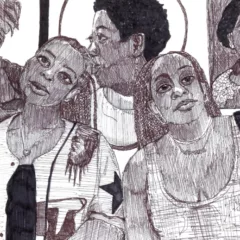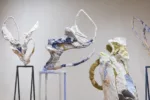Naomi Beckwith and Valerie Cassel Oliver, eds., Howardena Pindell: What Remains to Be Seen, Chicago and Munich; London and New York: Museum of Contemporary Art Chicago and DelMonico Books; Prestel, 2018
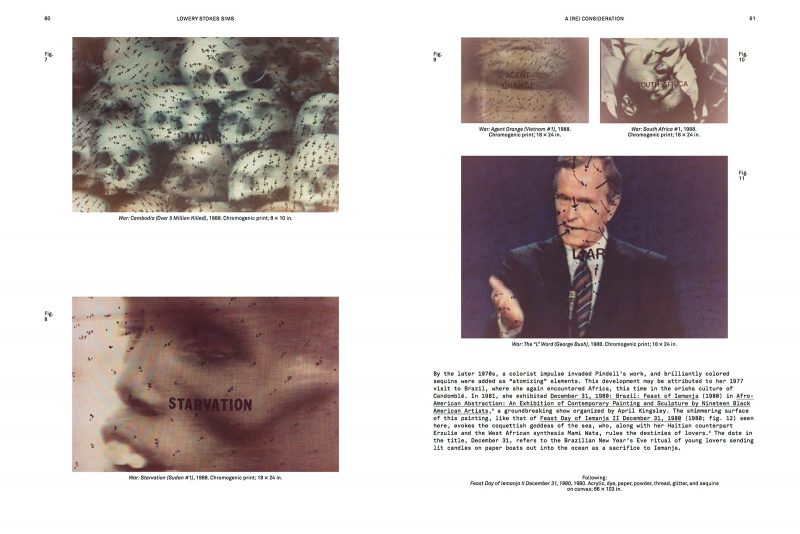
This stunning catalog is a beautiful object in its own right and does a remarkable job of conveying the visual impact of Pindell’s work, which has been exhibited since the early 1970s. Since the late 1970s, she has also been a significant figure within the art world because of her writing and lectures concerning the marginalization of African Americans and their art by mainstream art museums. This is the most comprehensive publication about Pindell’s art, writings and life.
She began as an abstractionist and was best known for two series of works, both in formats of the artist’s own devising: small collages of hole-punched paper dots which form a richly-textured, three-dimensional surface, and photographic prints of what she calls “video drawings.” In addition to the notable video, “Free, White and 21,” Pindell has also produced mostly large paintings and collages which increasingly include representation, and address subjects of social and political equity and concern for the planet.
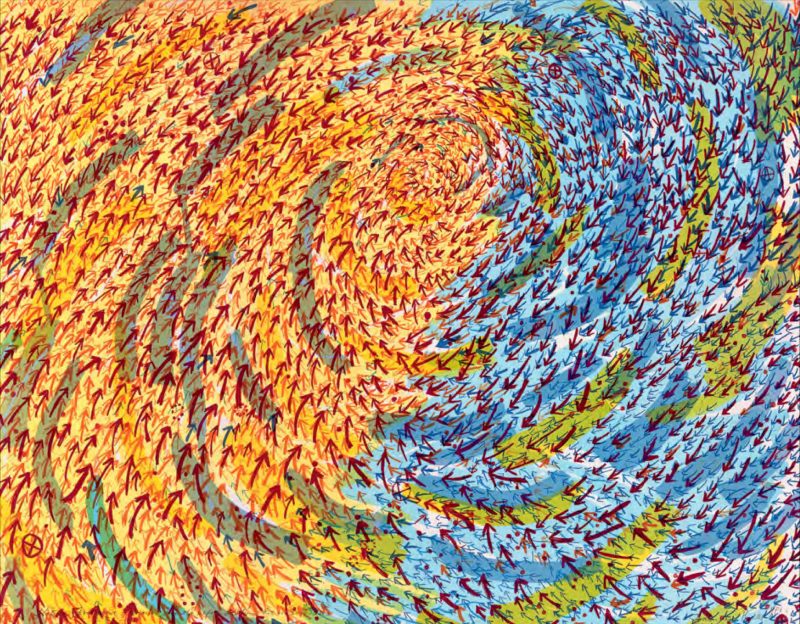
This volume includes essays by not only the curators but also by five additional art historians, including Lowery Stokes Sims and Brian Wallace, as well as by the painter, Charles Gaines. Selections from a round table on Pindell’s work indicate her impact on other artists. Several of Pindell’s essays and an interview with Kellie Jones are re-printed, as is the full text of “Free, White and 21.” The usual biography, exhibition history and bibliography is supplemented by a substantial chronology that includes political and cultural events of particular significance to the artist – from the beginning of the transatlantic slave trade to a patent filed for an improved hole punch – which are shown in parallel with events in her life. Among the most valuable and visually appealing aspects of the catalog are numerous, full-page and double-page spreads of details, which supplement color illustrations of all the work in the exhibition, documentary photographs and comparative material. The catalog was designed by Dylan Fracareta and reflects the usual high standards of DelMonico Books.
Lowery Stokes Sims and Patterson Sims, Joyce J. Scott: Harriet Tubman and Other Truths, Hamilton, NJ: Grounds for Sculpture, 2017
(Grounds for Sculpture, Amazon)
Joyce J. Scott is an artist of Pindell’s generation who is also inventive in relation to her art form – which is sculpture – and committed to art that addresses social inequities. One of the most surprising aspects of Scott’s career is that she has managed to attract national attention and survive entirely off of her art while living in Baltimore, where she is established within the local community. She had the great advantage of the example of her mother, Elizabeth Caldwell Talford Scott, who made extraordinary and inventive quilts. Acknowledging this debt, the exhibition and catalog include five of Elizabeth’s quilts (and one created by the two of them) alongside Joyce J. Scott’s sixty-three indoor works (twelve of which formed an installation devoted to Harriet Tubman) and three large works commissioned by Grounds for Sculpture (and sited out of doors). And as with Pindell, the museum and Florio Design make the handsome catalog much more valuable by including multiple views of a number of works – in this case front and back images in addition to details.
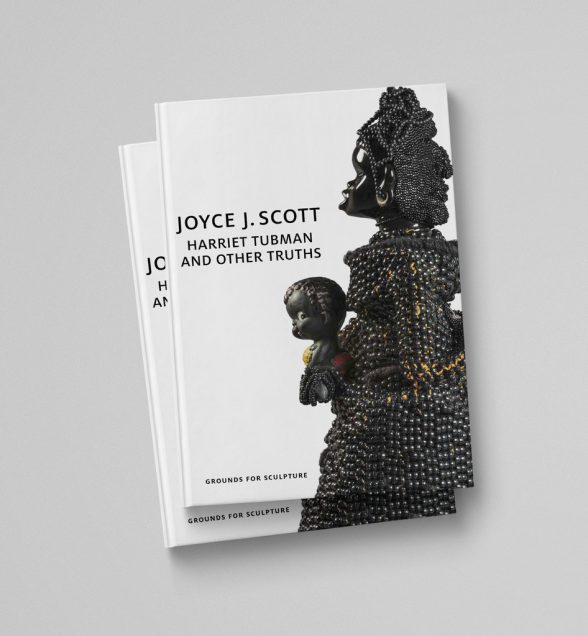
Scott’s medium is glass beads, from which she initially created neck pieces before moving on to tabletop-sized sculptures; some are only palm size, while the largest in the exhibition is 42 inches high. She often combines the beadwork with found parts – the head of an African wooden carving, animal bone, driftwood – and since 2011 she has increasingly combined her small, beaded works with considerably larger pieces of blown glass. All of Scott’s work is figurative and her subjects are neither easy, nor expected – either as objects of adornment or as sculpture. She has depicted lynching, rape, and sex trafficking as well as her ancestral heritage and subjects from religion and myth.
Patterson Sims contributes an overview of the artist while Lowery Sims discusses the Harriet Tubman installation and interviews Scott about her collaborations on the blown glass works and the very large, outdoor works at Grounds for Sculpture. The catalog, which includes biographical information, exhibition history, and a selected bibliography is the most substantial monograph on Scott since the 2000 exhibition catalog from the Baltimore Museum of Art.



